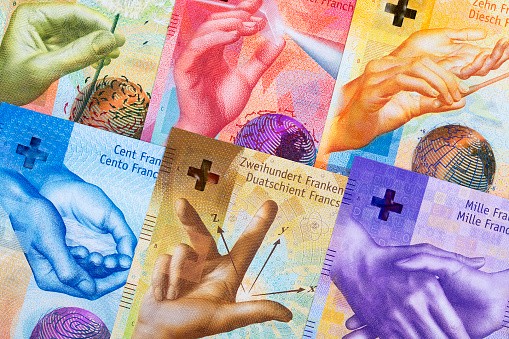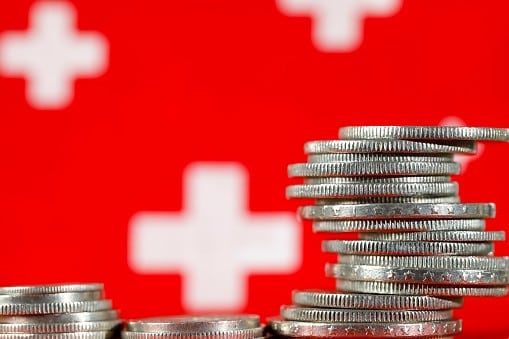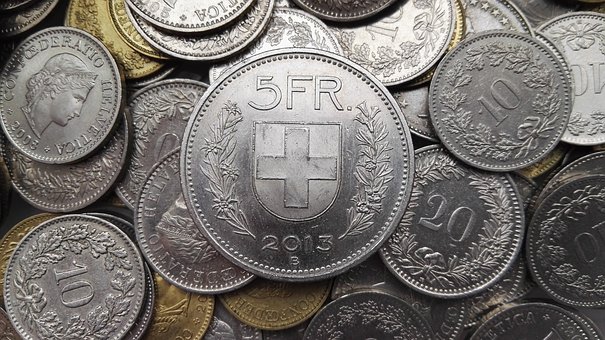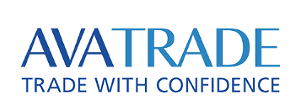This article was originally written in 2015 and was later published in the book “Unlock Your Potential With the Realities of Trading.” It is reproduced here for readers to understand what really happened to CHF pairs that year and why it was unprecedented. You will also understand why risk control is very important.
“…One can never know beforehand if a trade is going to be a day trade, a short term trade of days or weeks or a long term trade of weeks up to months. Every trade develops from the embryonic stage of the smallest form on the smallest time scale.” – Dirk Vandycke

How It Started
On September 2011, the Swiss National Bank (SNB) made a decision to put a peg at the 1.2000 level on EURCHF. They did so because they wanted to stabilize the export industry and the whole economy. It meant that EUR wasn’t allowed to reach parity with CHF, unlike other CHF pairs. That previous support level was referred to as a great floor and the SNB would keep on purchasing vast amounts of euros to preclude it from depreciating against Swiss Francs.
In 2011, EURCHF was below the level 1.2000. In fact, EURCHF plummeted by more than 2,800 pips that year, reaching a low of 1.0069. After the peg was effected, the cross jumped upwards above the level 1.2000.
In 2012, the price became very weak, but it was unable to close below the level at 1.2000. Any time the price went below the level, it would jump above the level again.
In 2013, the price was able to trade upwards noticeably, owing to the strength of the euro. The price was able to move upwards by over 500 pips, reaching a high of 1.2648
.
In 2014, the price trended downwards in a slow and steady manner until it reached the floor at 1.2000 again at the end of that year. Many saw this as a peerless opportunity to buy EURCHF cross.
EURCHF then looked like ‘an unfair’ market in which everybody could make money. It was like a market in which everybody could harness huge gains and certain lovers of risk might be willing to risk a huge part of their portfolios. Many thought it was stupid go short on EURCHF, since there was a ‘guarantee’ that the cross would eventually go up, just like interest rates in some developed countries, which some thought had nowhere to go except upwards. Some didn’t even know that interest rates could be made negative. The only thing that could render the scenario useless was when the peg was removed – which the SNB was unwilling to do then.

15 January 2015 – Magnificent Earthquakes in the Markets
Nevertheless, it was getting more and more expensive for the SNB to defend the peg. A central bank would need very deep pockets to keep on doing that for a long time. The SNB reserves increased to a record high and the outlook on the euro was becoming more and more gloomy. It was clear that holding onto that floor was illogical. On 15 January 2015, the SNB suddenly removed the peg and decreased the interest rate further into the negative territory. The trading world was taken by surprise. Some traders made huge profits and losses. Only those who didn’t trade CHF pairs were not seriously affected.
USDCHF dropped by 2,800 pips.
EURCHF dropped by 3,300 pips
GBPCHF dropped by 4,300 pips
CADCHF dropped by 1,500 pips
CHFJPY rallied by 6,900 pips
NZDCHF dropped by 1,500 pips
AUDCHF dropped by 1,500 pips
These moves were unprecedented! A daily candle was as long as a human arm! While it is normal for a pair/cross to experience a directional movement of thousands of pips within several days, weeks or months, it’s not normal for a pair/cross to move so much in a single day. The market is like a rubber band; if it moves too far in one direction, you should expect it to snap back in the opposite direction. Thus there were significant corrections on that day alone.
Neither the SNB nor the markets can be blamed for this: a central bank has the right to do what they want with their currency. In addition, the markets conditions that brought losses to some are the same conditions that brought profits for others. Good risk managers suffer negligible loss when caught on the wrong side of the market and they make commendable gains when they’re caught on the right side.

Lessons for Gamblers
I know someone who made a profit of 7,000,000 euros in two hours. Someone who funded his account with $100 and was using 0.1 lots made 2,600% returns in a single day. Someone who funded his account with $1,000 and traded with 0.5 lots came home from work and saw an account balance of over $10,000. Many brokers now need to pay their clients gargantuan amounts of profits.
If you made huge profits here, like several hundreds of percentage of profits, it was only a matter of luck; and no trader can experience permanent success based on pure luck. Good traders are those who survive adverse market conditions, not just those who make big money from the markets.
On the other hand, many traders received margin calls or lost most part of their portfolios. Imagine someone using 60.0 lots on a 1,000,000 pounds account. Needless to say, the money was lost immediately. Certain brokers were badly affected (though most were unaffected). I deeply empathize with those who were badly affected.
I was also affected, for I was holding two long positions on EURCHF and NZDCHF, but I suffered only -1.2% losses in total. My loss should have been only 1% on the two trades, but you know, slippage. Stops will forever be our life insurance policy. If you follow the advice of those who don’t use stops, your losses can’t be their responsibility.
Do you remember the 6 May 2010 Flash Crash? Do you remember the earthquake in Japan, which occurred on 11 March 2011, plus the nuclear disaster that followed? Do you know the effects they had on the markets? Do you know how traders were affected and what happened following massive drops in prices? These should serve as lessons against the Gambler’s Fallacy. Unfortunately, many people seemed not to learn their lesson.

Overconfidence is definitely not a good thing.
As you can see, whether you trade with fundamental or technical analysis or combine both, you don’t know what the market will do next and you can’t be always right. Even those who foresaw that the peg would be removed didn’t know when exactly it would be. When things go wrong, only risk control will help you, not your knowledge of technical or fundamental things. It’s better to focus on what we can control – our winners and losers.
It’s not the best idea to sacrifice permanent success for short-term greed. Those who appear stupid by doing the right things will eventually be proven to be prudent.
When I recommend the risk of 0.5% per trade, most people ignore me. In fact, you’d hardly see someone using only 0.1 lots on a $20,000 account or 0.5 lots on a $100,000 account. They think it’s too illogical and conservative, playing down my warning that the safety of our portfolios are more important that the profits we want to make. Large losses are extremely difficult to recover and therefore, they should be avoided at all costs. The most guaranteed setup in the world can’t make me risk more than 0.5% on any of my future trade.
I’ve been an advocate of permanent success, but it can’t be achieved by those who use large position sizes. Leverage isn’t a problem, but an irrational use of leverage is the problem. Leverage is a boon to risk managers who know how to control their losses and profits.
The SNB might still try to keep the CHF undervalued and they may explore another means of doing so. Opportunities to go long arose when prices declined towards ridiculously abnormal levels. These kinds of movements in a single day are extremely spectacular and therefore, current CHF pairs’ prices are bound to get corrected in the long run and things will return to normal in a matter of weeks. For instance, when USDCHF dropped like a stone, EURUSD ought to spike skywards, since they are negatively correlated in a normal condition. The latter was not affected and both pairs cannot remain bearish for a long time (and the dollar is strong in its own right).
USDCHF moved upwards by over 1,900 pips for the rest of the year 2015 (from the January 2015 low of 0.8246). In a Big Picture, USDCHF has largely consolidated so far since then.
These kinds of markets offer unique opportunities to assume contrarian positions. At the end of 15 January 2015, I went long on EURCHF, USDCHF, AUDCHF, NZDCHF, GBPCHF and CADCHF (selling short CHFJPY), using a position size of 0.1 lots for each $20,000. I targeted 500 pips on each trade. I held these long positions for weeks or months – until all the targets were met. I didn’t make use of breakeven or trailing stops this time around because I wanted to create enough leeway for the high volatility in the markets, while I enjoyed the free ride.
The bearish pair and crosses cannot remain bearish forever. The CHF markets were expected to correct themselves gradually until things became normal. As some basked in the euphoria of windfall and others licked their wound, we shouldn’t forget the lessons we learned from the CHF pairs volatility, which were a blessing and a curse.
This piece is ended with the quote below:
“If you trade at a size that’s nearly meaningless, there will be very little emotions involved. However, if you are taking on big risks you will make emotional mistakes.” – Dave Landry
- Broker
- Min Deposit
- Score
- Visit Broker
- Award-winning Cryptocurrency trading platform
- $100 minimum deposit,
- FCA & Cysec regulated
- 20% welcome bonus of upto $10,000
- Minimum deposit $100
- Verify your account before the bonus is credited
- Fund Moneta Markets account with a minimum of $250
- Opt in using the form to claim your 50% deposit bonus
Learn to Trade
Never Miss A Trade Again

Signal Notification
Real-time signal notifications whenever a signal is opened, closes or Updated

Get Alerts
Immediate alerts to your email and mobile phone.

Entry Price Levels
Entry price level for every signal Just choose one of our Top Brokers in the list above to get all this free.



